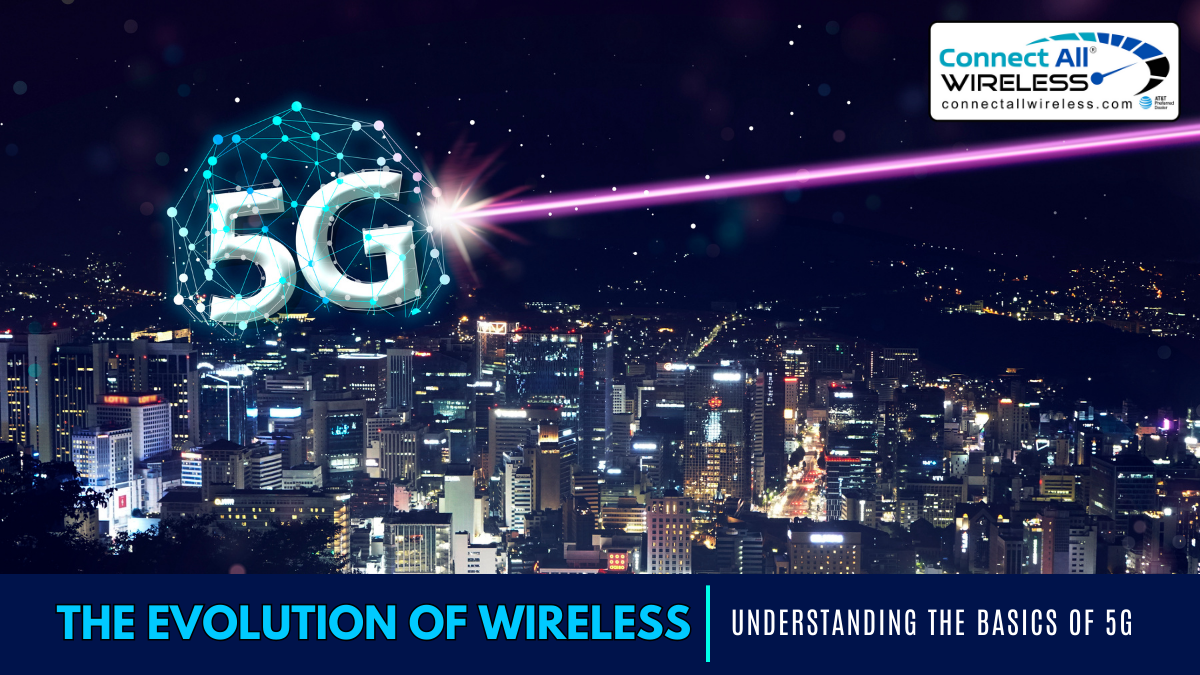
In the ever-evolving landscape of technology, the progression of wireless communication has been a remarkable journey. The fifth generation of wireless technology, commonly known as 5G, represents a significant leap forward, promising faster speeds, lower latency, and a plethora of opportunities for various industries. In this blog post, we'll delve into the basics of 5G, exploring its evolution, key features, and the potential impact it holds for the future.
Evolution of Wireless Communication:
To understand the significance of 5G, it's essential to trace the evolution of wireless communication. The journey began with 1G in the 1980s, providing the foundation for mobile telephony. Subsequent generations, 2G, 3G, and 4G, introduced advancements such as text messaging, mobile internet, and faster data speeds. However, as our dependence on wireless connectivity increased, so did the demand for a more robust and efficient network – paving the way for 5G.
Key Features of 5G:
-
Speed: 5G boasts unparalleled speed, with data rates expected to be up to 100 times faster than 4G. This means faster download and upload speeds, enabling seamless streaming, quicker downloads, and improved overall user experience.
-
Low Latency: One of the most significant improvements 5G brings is its low latency, the time it takes for data to travel from the source to the destination and back. With latency reduced to a few milliseconds, applications requiring real-time responsiveness, such as augmented reality (AR) and virtual reality (VR), can now operate smoothly.
-
Increased Capacity: 5G is designed to handle a massive number of connected devices simultaneously. This increased capacity is crucial for the growing Internet of Things (IoT) ecosystem, where various devices, from smart appliances to industrial sensors, require a reliable and responsive network.
-
Network Slicing: Another revolutionary feature of 5G is network slicing, allowing operators to divide the network into multiple virtual networks tailored for specific applications or services. This customization ensures that diverse requirements, ranging from autonomous vehicles to smart cities, can coexist on the same infrastructure without compromising performance.
-
Massive Machine Type Communications (mMTC): 5G enables connectivity for a massive number of devices, facilitating the proliferation of IoT devices. This feature is crucial for the development of smart homes, smart cities, and industrial applications where a multitude of devices need to communicate seamlessly.
Potential Impact and Applications:
-
Enhanced Mobile Experience: With faster speeds and lower latency, mobile users will experience enhanced connectivity, leading to quicker downloads, smoother streaming, and improved overall performance. This is particularly significant as mobile devices continue to play an integral role in our daily lives.
-
IoT Revolution: 5G's increased capacity and mMTC capabilities pave the way for a significant IoT revolution. From smart homes and wearables to industrial IoT applications, the seamless connectivity provided by 5G opens up new possibilities for innovation and efficiency.
-
Revolutionizing Industries: Various industries, including healthcare, manufacturing, and transportation, stand to benefit from 5G. Remote surgeries, smart factories, and autonomous vehicles are just a few examples of how 5G can revolutionize the way we work and live.
-
Augmented and Virtual Reality: The low latency of 5G makes augmented and virtual reality experiences more immersive and responsive. From gaming to education and professional training, these technologies are set to undergo a transformative change with the advent of 5G.
Conclusion:
In conclusion, the evolution of wireless communication, culminating in the advent of 5G, marks a transformative leap in connectivity. As we stand on the brink of this technological revolution, the promises of 5G are poised to redefine the way we experience and interact with the digital world. From its unprecedented speed and low latency to the capacity to connect a multitude of devices seamlessly, 5G is more than just an upgrade; it's a gateway to a new era.
For Michigan residents and businesses, the implications of 5G are particularly profound. The promise of Michigan Wireless Internet reaching new heights with 5G opens up avenues for enhanced mobile experiences, robust IoT ecosystems, and transformative applications across various industries. From the bustling streets of Detroit to the serene landscapes of the Upper Peninsula, Michigan is on the brink of a wireless revolution that will impact communities, businesses, and individuals alike.
As we navigate this uncharted territory, embracing the potential of 5G, it's essential to recognize that this evolution is not merely about faster downloads and smoother streaming. It's about fostering innovation, powering smart cities, and connecting the unconnected. Michigan Wireless Internet, powered by 5G, becomes the backbone of progress, linking urban centers and rural expanses, driving economic development, and bringing the digital future within reach for all. The evolution of wireless has reached a crucial juncture, and as we look forward, Michigan stands at the forefront of this paradigm shift, ready to harness the full potential of 5G for the benefit of its communities and beyond.

No comments yet